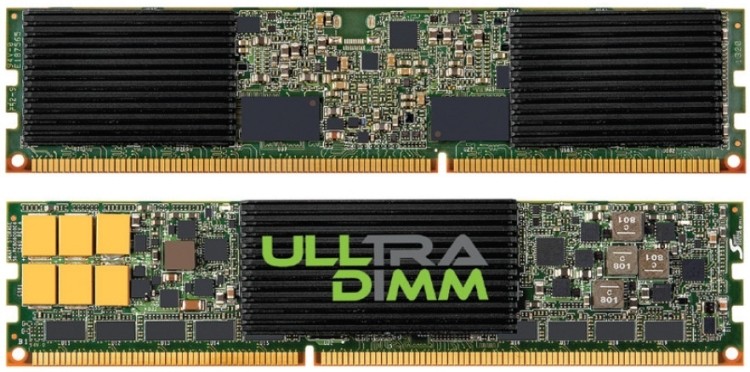SanDisk’s new solid state drive was first showcased late last year and is unlike any other you’ve seen. It bypasses Serial ATA and PCI Express interfaces and instead relies on the memory channel as its gateway to the rest of the system. Known as SanDisk ULLtraDIMM SSDs and built in cooperation with Diablo Technologies, it’s essentially solid state flash memory that has been mated to a RAM module for a more direct path to the CPU.
As you likely already know, traditional RAM is volatile which means it doesn’t store data once the power has been cut. The opposite holds true with SanDisk’s new product and on top of that, they boast much larger capacities than regular DIMMs. The company is initially rolling out units with capacities of 200GB and 400GB using 19-nanometer MLC flash.

The primary benefit of having storage as close to the CPU as possible is of course low latency times. The company says ULLtraDIMMs provide less than 5ms write latency which is the lowest in the industry. Elsewhere, users can expect random performance of 150K read IOPS and 65K write IOPS and 1GB/s / 760MB/s of sustained read/write performance. What’s more, they can scale I/O performance linearly while maintaining consistent write latency.
Endurance shouldn’t be much of a concern either as the drives are rated for 10 full writes per day for five years. That works out to more than seven petabytes on the 400GB model – not too shabby.
SanDisk said the modules are now shipping for qualification and should be available to enterprise users in the near future.